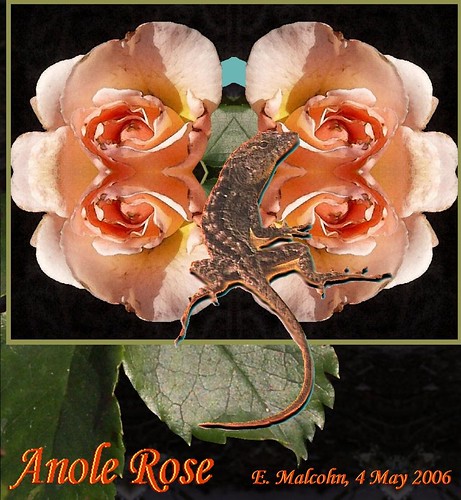After Dark, While the Nightjars Called

Discarded at the "post office pond," which was relatively quiet around 7:30 PM on April 19. The pond sported a few dragonflies, some skimmers. Small, expanding rings rippled through the water. I heard distant croaking. Then I found this poignant plastic as I walked close to the muddy edge.
Note: There is no disrespect or shock intended in this entry, only the reporting of a somewhat clinical discussion whose contents might be disturbing.
Mary and I took our walk Friday night, breaking to sit at an outdoor table for coffee and a very late dinner. Mary was looking pensive. I asked what was on her mind.
She said, "I have a possible point of debate." Not wanting to bring it up. I told her to go ahead.
Earlier, in the context of some discussion, I'd mentioned that my mother had died in her sleep back in 1982. Her aorta had burst -- and then, I said, "she was gone."
Mary's point of debate was that it was unlikely my mother had died instantaneously. I agreed -- there was no debate at all, just the way I had worded things. In fact, my mother had not been declared dead for another hour, during which time she had lain in a coma.
That's when, sitting by a near-empty strip mall parking lot shortly before midnight, listening to Chuck-will's-widows calling from not-yet-cleared forest across a county road, we started talking about decapitations....
Instant death, Mary said, would be akin to having an elephant step on one's cranium, mashing it to pulp. That would be more "humane," she said, than a beheading. She mentioned Mary, Queen of Scots, whose lips had moved in prayer after she had been beheaded. And a man, whose name she'd forgotten, who had winked after his own decapitation.
I said, "You're telling me that these stories are not just apocryphal."
She'd discussed them with lab partners. "I don't see how they could not be true." That unless shock deadens everything (prior to actual death), there is still enough blood before it congeals, still enough neural activity, still enough time before rigor mortis sets in, for there to conceivably be consciousness.
I found the story about Mary, Queen of Scots, at Scotsman.com: "She was led to the scaffold on February 8th 1587, wearing the red of a Catholic martyr. It is said that it took three blows to complete the beheading and that when the executioner lifted her head by the hair for all to view, he was left with only a wig in his hand as her head rolled on the ground at his feet, lips still moving in prayer."
The man whose name the present-day Mary had forgotten had likely been Languille, a convicted murderer who was guillotined in France. I found his story and others in the article "Lucid Decapitation" on DamnInteresting.com, which quotes from the observations of a Dr. Beaurieux during the execution: "It was then that I called in a strong, sharp voice: 'Languille!' I saw the eyelids slowly lift up, without any spasmodic contractions … Next Languille's eyes very definitely fixed themselves on mine and the pupils focused themselves … After several seconds, the eyelids closed again, slowly and evenly, and the head took on the same appearance as it had had before I called out."
Some time ago, I think on the Discovery Channel, I had watched a segment that described incidents of remote control via brain waves. Similar news is presented in Daniel Dasey's article, "Remote control brain" (Sydney Morning Herald, November 28, 2004).
Dasey writes, "Reports suggest that the BrainGate project, funded by American company Cyberkinetics, has implanted a brain-computer interface in a 25-year-old quadriplegic. The device has reportedly allowed the man to switch on lights, change channels on television and read email using only his brain. The man has also been able to play the computer game Pong and to carry out the tasks while talking. The trial grew from a series of successful studies on monkeys who were able to use their brains to play simple video games in exchange for food rewards. Other studies on monkeys showed they could feed themselves with a robotic arm by using signals from their brains."
I thought: If brain implants had been in Mary, Queen of Scots, along with a way to transmit, we might have known what she was praying and experiencing. The same goes for Languille, etc. My curiosity might sound morbid but it doesn't feel that way to me, any more than my curiosity about other frontiers, like outer space or the ocean floor.
Mary and I spoke at greater length along these lines before we ended our dinner and set out for home.
When I lived in Massachusetts I attended a few meetings of a chapter of the Institute of Noetic Sciences ("We are a nonprofit membership organization located in Northern California that conducts and sponsors leading-edge research into the potentials and powers of consciousness—including perceptions, beliefs, attention, intention, and intuition. The institute explores phenomena that do not necessarily fit conventional scientific models, while maintaining a commitment to scientific rigor.") Some of the discussions included anecdotal reports about the "threshold" between life and death -- whatever in fact that means.
My late dinner had topped off a week devoted mostly to transcribing: a rush job for one client, and the last of the transcripts in my large job for the other. Any remaining work in the latter case will likely come in short tweaking sessions. I've retrieved framed photos from one gallery show and put up more for the new one. We've gotten estimates from a second hurricane shutter vendor and need to decide whom to go with -- but not before we ask a few more questions of each.
Writing jags have come in-between work jags. What's especially gratifying is that the visions for future books in the series inform my current draft. I'm able to insert foreshadowing for what will happen way down the line, in a manner that furthers the plot of the story at hand. I get frameworks for composing scenes I'd had trouble writing earlier.
The brown anole in the collage below had been sitting not far from where Mary and I had our discussion, though I'd photographed it on April 29. I'd spotted the rose on Thursday outside the art league. (I've included in my Flickr post the series of steps I took to create the piece.)












3 Comments:
http://blog.roanokehousehunter.com/help-baby-ian/ Thanks for pointing out that the link to Marty's blog did not include stuff about donating ink cartdridges. I fixed it and put it above.
I'll come back later to read, but for not I'm having a good smile at the bug's evening stroll!
That twilight of consciousness, when one is severed from life, yet moments before final death, must be more than remarkable. I can't imagine it, yet it is most likely the norm in the final few moments. A thought provoking post.
A chicken still runs when it's head is cut off.
I'm still wondering about the glorious white light people who have died or had NDE see. Is it a result of the brain dying or really some sort of heaven? When you faint you sometimes see white too.
Post a Comment
<< Home